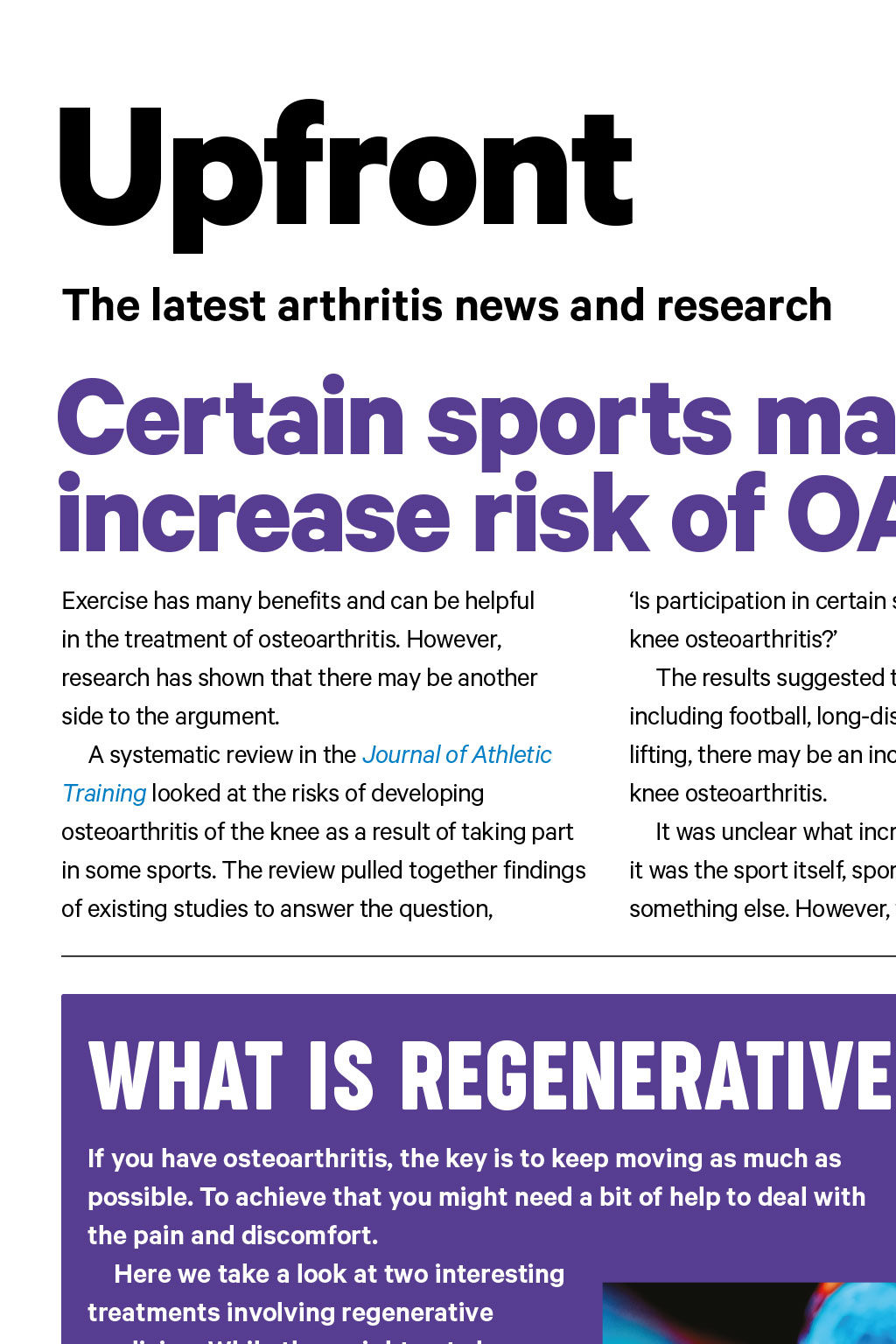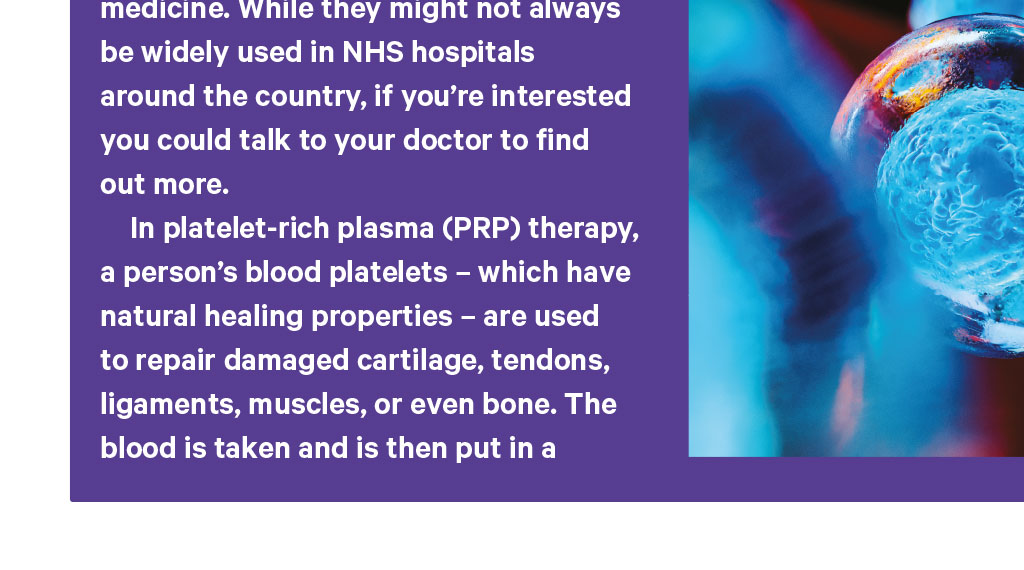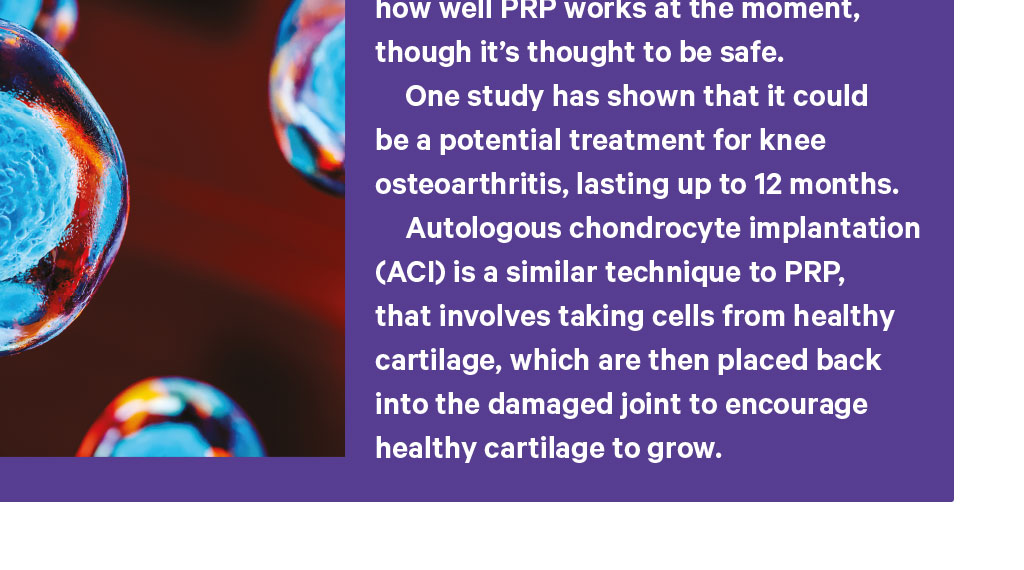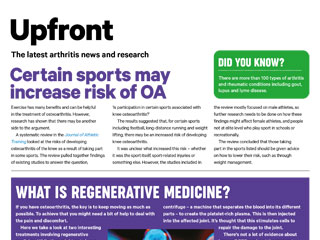








Upfront The latest arthritis news and research Certain sports may increase risk of OA Exercise has many benefits and can be helpful in the treatment of osteoarthritis. However, research has shown that there may be another side to the argument. A systematic review in the Journal of Athletic Training looked at the risks of developing osteoarthritis of the knee as a result of taking part in some sports. The review pulled together findings of existing studies to answer the question, Is participation in certain sports associated with knee osteoarthritis? The results suggested that, for certain sports including football, long-distance running and weight lifting, there may be an increased risk of developing knee osteoarthritis. It was unclear what increased this risk whether it was the sport itself, sport-related injuries or something else. However, the studies included in DID YOU KNOW? There are more than 100 types of arthritis and rheumatic conditions including gout, lupus and lyme disease. the review mostly focused on male athletes, so further research needs to be done on how these findings might affect female athletes, and people not at elite level who play sport in schools or recreationally. The review concluded that those taking part in the sports listed should be given advice on how to lower their risk, such as through weight management. What is regenerative medicine? If you have osteoarthritis, the key is to keep moving as much as possible. To achieve that you might need a bit of help to deal with the pain and discomfort. Here we take a look at two interesting treatments involving regenerative medicine. While they might not always be widely used in NHS hospitals around the country, if youre interested you could talk to your doctor to find out more. In platelet-rich plasma (PRP) therapy, a persons blood platelets which have natural healing properties are used to repair damaged cartilage, tendons, ligaments, muscles, or even bone. The blood is taken and is then put in a centrifuge a machine that separates the blood into its different parts to create the platelet-rich plasma. This is then injected into the affected joint. Its thought that this stimulates cells to repair the damage to the joint. Theres not a lot of evidence about how well PRP works at the moment, though its thought to be safe. One study has shown that it could be a potential treatment for knee osteoarthritis, lasting up to 12 months. Autologous chondrocyte implantation (ACI) is a similar technique to PRP, that involves taking cells from healthy cartilage, which are then placed back into the damaged joint to encourage healthy cartilage to grow.